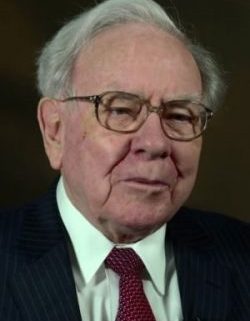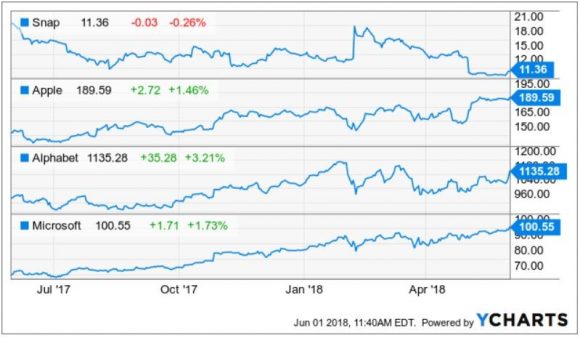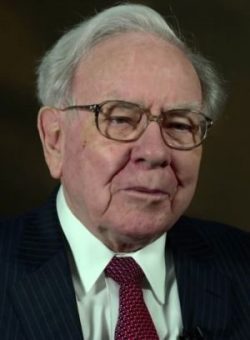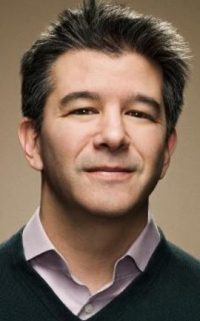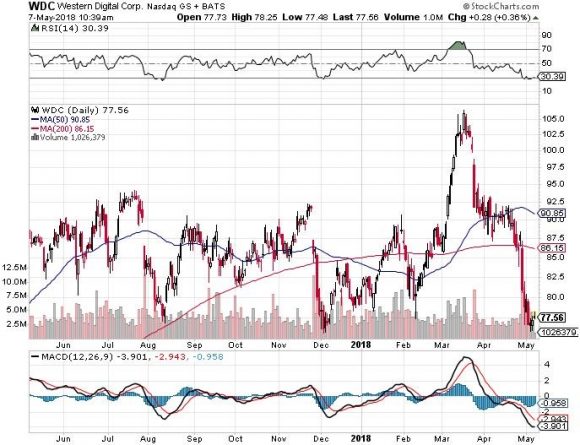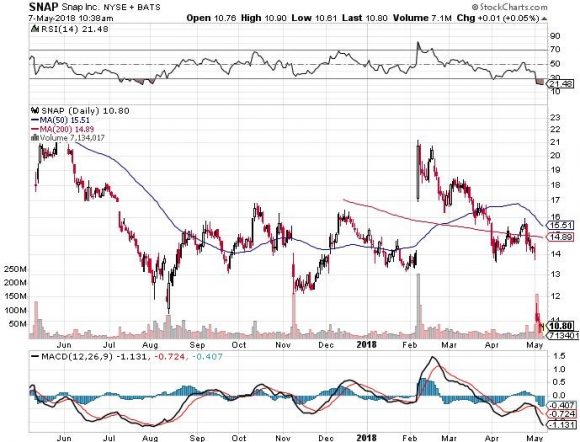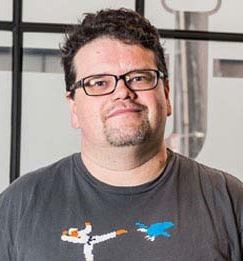The tech industry is infatuated with acronyms.
The two-, three- and four-letter acronyms of yore have been spruced up by a new wave of contemporary terms.
There are a lot more of them now and readers will need to absorb the meaning of each term to avoid our content seeming like a Grecian dialect.
The Mad Hedge Technology Letter will break down the relevant terminology that applies to the current tech sector.
This will aid readers in their pursuit of financial satisfaction.
FANG: Facebook (FB), Amazon (AMZN), Netflix (NFLX), and Google (now Alphabet) (GOOGL)
Jim Cramer, the host of CNBC's Mad Money, coined this term as this quartet became such a force to reckon with, that they deserved their own grouping. Financial commentators and analysts often refer to the FANGs that ultimately represent the developments and destiny of large cap tech. Apple is sometimes grouped in this bundle with analysts adding a second A inside the acronym.
AWS - Amazon Web Services
The cloud arm of Amazon is its cash cow. Amazon invented this business out of thin air in 2006. It offers the ability for Amazon to operate its e-commerce division close to cost by plowing profits from its thriving cloud arm. AWS is the backbone to the whole Amazon operation. Without it, Jeff Bezos would need to rethink another genius business model because current and future success hinges on this one subsidiary. AWS is the market leader in the cloud industry, carving out 33% of the total market. Microsoft is the runner-up and saw its market share surge from 10% to 13% in the latest quarter.
GDPR - General Data Protection Regulation
Europe has been a stickler concerning individual data protection, and the American companies running riot with Europeans personal data has reached its climax. On May 25, 2018, new European regulations were implemented to give the user more control of handing out their personal data. Penalties for non-compliance are steep. Companies risk being fined up to 20 million Euros or 4% of annual worldwide turnover, whichever is larger. Facebook's Mark Zuckerberg now has a reason to behave like an angel. The least regulated industry in the world is finally experiencing the bitter regulation pill most industries have felt for centuries.
SaaS - Software as a Service
A software distribution model licensing software on a subscription basis. Instead of installing many of these software programs, many of them are available through the Internet on the cloud. Most subscriptions work on an annual basis, and this recurring revenue model has carved out additional income from companies that were used to paying a one-off fee for software. This model has been highly successful. Even former legacy companies have deployed this business model to critical acclaim.
AI - Artificial Intelligence
An area of computer science that strives to deploy human intelligence into machine simulation. The four main tasks it carries out are speech recognition, learning, planning, and problem solving. A.I. has been identified as a cutting-edge tool to fuse with technology products boosting the underlying performance creating massive profits for the participants. This phenomenon is controversial with the prophecy that robots might advance rapidly and turn on their inventors. As each day passes, A.I. is starting to infiltrate deeper into our daily lives, and humans are becoming entirely reliant on their positive functions to carry out daily tasks.
IoT - Internet of Things
Internet connectivity with things. This network will connect billions and billions of devices together. Your bathtub, thermostat, and razor will be armed with sensors and processors that reroute the performance data back to the manufacturer. Deploying the data, engineers will be able to enhance products with even more precision and high quality serving the end customer needs. 5G testing is ongoing in select American cities and new hyper-fast Internet speeds will make mass adoption of IoT products a reality.
5G - 5th generation wireless system
This is the successor to 4G and is poised to increase wireless Internet speeds up to 20 gigabits per second. Some of the traits will be low latency, high mobility, and will be able to accommodate high connection density. This technology is crucial to the development of the next generation of groundbreaking technology such as autonomous cars that need a faster Internet speed to run elaborate software. The war to develop this technology with the Chinese has turned into a heated standoff. China is stubbornly bent on becoming the global leader of technology in the future, and the communist government views 5G as the keys to the Ferrari. U.S. companies Verizon (VZ), AT&T (T) and Sprint (S) plan to roll out 5G in 2019. Other key companies are Huawei, Intel (INTC), Samsung, Nokia, Ericsson and Qualcomm (QCOM).
BAT - Baidu, Alibaba, and Tencent
This trio is the Middle Kingdom's answer to America's FANG. The nine-year domestic bull market has been led by large-cap tech, at the same time China's economy has been fueled by Baidu, Alibaba, and Tencent. Baidu and Alibaba are tradable through American depositary receipts (ADR). Tencent is public on Hong Kong's Hang Seng stock exchange, the third largest stock market in Asia. These companies are all a mix and mash of functionality that covers the same broad spectrum of the FANGs. They are the best companies in China and are on the cusp of every single cutting-edge technology from A.I. to autonomous vehicles. The Mad Hedge Technology Letter does not recommend these stocks to our subscribers because the Chinese government is on a nationalistic mission to delist Alibaba and Baidu from America and bring them back home. Initially, Alibaba wanted to list on the Hang Seng Hong Kong stock exchange, but draconian rules applied to dual-listing made the company flee to America.
NIMBY - Not In My Back Yard
Local opposition to proposed development in local areas. Although not a pure tech term, the epicenter of the NIMBY movement is smack dab in the middle of the San Francisco Bay Area where all the premium tech jobs are located. Local opposition has made it grueling for any developers to build.
What's more, the expensive cost of land has made any new building a tough proposition. This explains the 10-year drought where San Francisco experienced not a single new hotel built. The dearth of housing has caused San Francisco housing prices to skyrocket to a medium price of $1.61 million as of March 2018. Exorbitant housing prices have triggered a mass migration of Californians fleeing the Bay Area in droves. The shocking aftereffects have put highly paid Millennial tech workers spending the bulk of their salary on housing or living in dilapidated shacks. The extreme conditions we are now seeing are forcing schools around the Bay Area to close in unison as young families cannot afford to stay. Tech companies have become public enemy No. 1 in the Bay Area as locals are desperate to maintain their current lifestyle but are finding it more difficult by the day.
MAU - Monthly Active Users
Favored by social media companies to measure growth trajectories. This is how Twitter (TWTR) analyzes the health of its user numbers delivering a narrative to potential investors by hyping up user growth. If investors value this metric, this allows companies to focus on driving growth at the expense of burning cash. Thus, emerging social media companies such as Snapchat (SNAP) run huge loss-making operations for the promise of future profits after scaling.
ARPU - Average Revenue Per User
Favored by maturing social media companies, particularly Facebook, which has already grown global usership to 2.2 billion. Once the emerging hypergrowth phase comes to an end, social media companies focus on extracting more income per user through targeted ads. Facebook and Alphabet have the best ad tech divisions in all of Silicon Valley. The business model has made Facebook an inordinate amount of money as advertiser's flock to this de-facto marketplace paying more for effective ads whose price is set at an auction. It's a vicious cycle that attracts more traditional advertisers because it is the only method of selling to Millennials who are addicted to social media platforms. Cord-cutting is accelerating this trend forcing advertisers to co-exist with the Mark Zuckerberg model.
There are many more acronyms in the tech world that need explaining and that is exactly what I will do. The Mad Hedge Technology Letter will be back with another slew of technical terms to help subscribers understand the tech universe.
_________________________________________________________________________________________________
Quote of the Day
"You can worry about the competition... or you can focus on what's ahead of you and drive fast," said Square and Twitter CEO Jack Dorsey.






